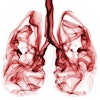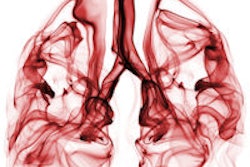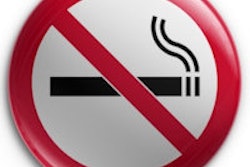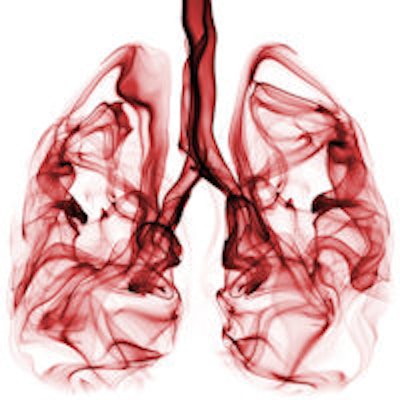
SAN FRANCISCO - CT lung cancer screening has a bright future but also high hurdles to leap before it becomes the efficient screening test promised by the results of the National Lung Screening Trial (NLST), according to a May 17 presentation at the American Thoracic Society annual meeting (ATS 2016).
As things stand now, tools to measure the appropriate population to be screened are hopelessly blunt, patients aren't always willing to participate in screening, and the nodules that get followed up aren't necessarily the ones at highest risk for malignancy, said Dr. Renda Soylemez Wiener.
"As we roll out lung cancer screening on a national basis, it's my hope that we can all translate the reductions in lung cancer mortality that we've seen in the clinical trials out into the real-world setting, and do so in ways that maximize benefits and minimize harms," she said. "We need to make sure we're screening the right patients and optimizing care for patients with nodules and cancers."
Wiener is a pulmonologist at Boston Medical Center and an assistant professor of medicine at Boston University.
Promise and peril
Published in 2011, the NLST showed a robust 20% relative reduction in lung cancer mortality. But after three annual screening rounds, 40% of all screening subjects had a nodule that required workup, Wiener noted. Of these, "the vast majority did not have lung cancer, so these patients were exposed to the harms of screening and evaluation without the potential benefits," she said.
The many organizations that labored to get screening approved are well aware that it holds great potential for both benefit and harm, Wiener said. It's not just a scan, it's an annual exam that comes with diagnostic workup of all the nodules found.
Now, with screening well underway across the U.S., several important questions remain:
- How can patient selection be improved?
- How can the reach of lung screening be increased to ensure that patients who need it are getting it?
- How can communication and the shared decision-making process be improved?
- How can patient care be optimized once nodules are detected in screening?
"I think it's important to think how we can optimize appropriate care of screen-detected nodules and cancers," she said.
We need to learn more about how biomarkers affect the risk stratification of nodules, and we need more information to optimize the decision to undergo nodule surveillance versus biopsy and resection, Wiener said. If surveillance is chosen, how long should it last?
These questions all require more data on early-stage cancers, and research is underway, she said. The task ahead includes minimizing disparities in treatment based on race and cultural factors that play a role in who is screened. Finally, better alternatives are needed for people who are unwilling or unable to have surgery.
Who needs screening?
"We recognize at this point that the current eligibility criteria are not sufficient," Wiener said. "They're nice in the sense that if you know someone's age and smoking history it's relatively straightforward, but it's probably too one-dimensional, meaning not sufficiently sensitive."
Last year a study by Wang et al found that fewer than half of individuals with lung cancer would be eligible for screening. And the insufficiency works both ways.
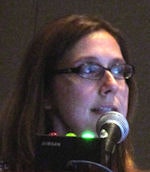 Dr. Renda Soylemez Wiener from Boston University.
Dr. Renda Soylemez Wiener from Boston University."In some ways the eligibility criteria are too narrow, but they are also too broad," Wiener said. "They are too blunt an instrument, and they subject a lot of low-risk individuals to the potential harms of screening without much benefit."
Kovalchik et al in 2013 found that the 20% of NLST participants at lowest risk of cancer accounted for only 1% of prevented lung cancer deaths. But patient selection can be improved -- in part by using clinical information that is already available. A study by Katki et al published this week in the Journal of the American Medical Association nicely demonstrated how clinical information can inform the patient selection process, Wiener said.
Katki and colleagues showed that a risk model "using patient clinical characteristics that are not currently in the eligibility criteria would save 9,000 more lives [over five years], and would do so more efficiently so the number needed to screen is lower and there are fewer false positives for every cancer death prevented," she said.
Wiener also highlighted research presented at ATS 2016 that looked for other ways to improve screening selection. In that study, Young, Hopkins, and colleagues looked at airway obstruction as a risk factor for lung cancer in an American College of Radiology Imaging Network (ACRIN) substudy of the NLST.
In patients without chronic obstructive pulmonary disease (COPD), CT screening reduced lung cancer-specific mortality by 28% but did not confer a significant mortality benefit, the researchers found. They suggested that competing causes of death in COPD patients might be responsible for erasing mortality gains from screening.
Biomarkers and reach
Incorporating biomarkers also has the potential to fine-tune the screening selection process, according to Wiener.
As for increasing the reach of lung cancer screening, primary care providers are supposed to be on the front lines of screening referral. Yet research by Wiener's group shows that many primary care providers aren't as actively involved as they are in referring patients for more traditional screening tests, such as for prostate or colon cancer. However, traditional tests come with alerts in the electronic medical record (EMR) telling doctors it's time to remind patients to get screened -- lung cancer screening has no such alert.
Lung cancer screening is complicated, though, so even if there were an automated EMR alert, its sufficiency is in doubt. At the same ATS 2016 session where Wiener spoke, Lori Sakoda, PhD, from Kaiser Permanente of Northern California presented a study showing that data capture for half of EMRs in which patients provided smoking status lacked basic information on lung cancer screening eligibility. This included things like the number of pack-years smoked and time since quitting, information that would permit the records to be used to flag potential screening candidates.
"I think using the EMRs to improve the reach of screening is definitely an area that needs to be refined before we can take advantage of it," Wiener said.
Of course, it's the patient who must make the decision to undergo screening, and at this point which patients will choose screening and which will not is uncertain, she said. Data from a Department of Veterans Affairs (VA) demonstration project showed that acceptance of screening ranged from 35% to 65% across seven VA centers.
"It's not at all clear that patients will accept screening, and we can't predict which ones will and won't, so we need to talk to them about it," she said.
A study by Williams et al even showed that blacks were more prone than whites to refuse surgical treatment for lung cancer, Wiener said.
"This is something we should know before we send people to be screened," she said.
In general, doctors need better shared decision-making tools that are culturally sensitive and that improve the quality of communication, which has been found to affect willingness to screen. Patients who rate communication highly are less likely to refuse surgical resection and more likely to adhere to nodule evaluation, Wiener said.



